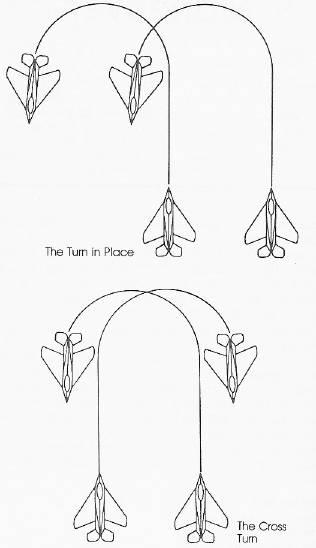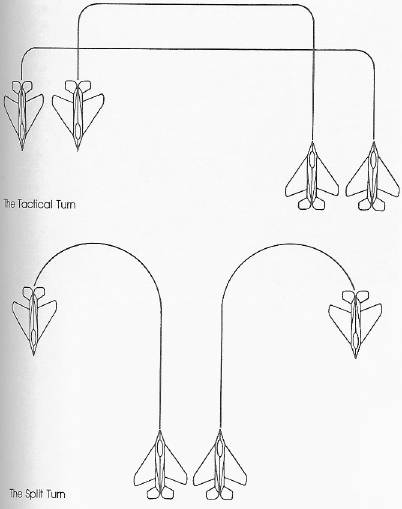Jet Fighter School II
More Training for Computer Fighter Pilots
by Richard G. Sheffield
Chapter 5
Two-Plane Aerobatics and Maneuvers
A number of simulations allow two-plane operation, Some use a split screen so both pilots use the same computer screen divided in half. Others offer a modem-operation option that lets each player use a separate computer. These games are often advertised as providing for two-player, head-to-head dogfighting. What many players don't realize is that this option also lets them fly together and perform many two-plane aerobatic maneuvers.
Learning to fly aerobatic maneuvers is tough, but learning to coordinate these maneuvers and fly them with another plane introduces a whole new level of complexity. Even if both pilots know the maneuver well, it can become fatally fouled up if they don't communicate well and are not used to flying with another plane close by. This type of flying does not come naturally. It must be practiced.
The best way to become acquainted with two-plane formation flying is to do it. First, you should master finding each other and flying side-by-side. This is called the line abreast formation or combat spread. Once you have the hang of forming up abreast and maintaining the same speed (this isn't easy), assign one pilot as lead and play follow the leader. Changing altitude together is simple but it won't take too long to figure out that staying together while turning is a problem. It will be well worth your time to practice and learn the following methods for turning in formation, or section reversal.
- The in-place turn
- The cross turn
- The split turn
- The tactical turn
These turns should be called by the leader. For instance, if the leader is going to make a tactical turn to the left, he or she should inform the other pilot, "Tac turn left."


Figure 5-1. Four Basic Two-Plane Maneuvers
Two-Plane Aerobatic Maneuvers
If you've ever seen the Navy Blue Angels or the Air Force Thunderbirds in action, you know how exciting aerobatics can be when performed by more than one plane. These teams feature a group of planes that fly close formation maneuvers and two opposing solo planes that make the exciting high-speed head-on passes. The maneuvers covered in this section are similar to the types of maneuvers that would be performed by the solo pilots.
There are two basic types of maneuvers: tandem maneuvers, in which you and the other pilot fly together in the same direction, and opposing maneuvers in which you and the other pilot fly head-on toward each other. Flying in tandem has already been covered, but before you launch into the maneuvers it would be a good idea for you and your partner to practice several head-on passes. Some simulations allow midair collisions and some don't, so allow for enough space between your planes if collisions are possible. Remember that you're putting on a show, so pick a landmark for the show area and try to time your passes so that you're over the viewing area as you pass. A runway or tower make good reviewing areas, especially if your simulation offers a tower view.

Figure 5-2. The U.S. Navy Blue Angels in Tight Formation
Table of Contents | Previous Section | Next Section
